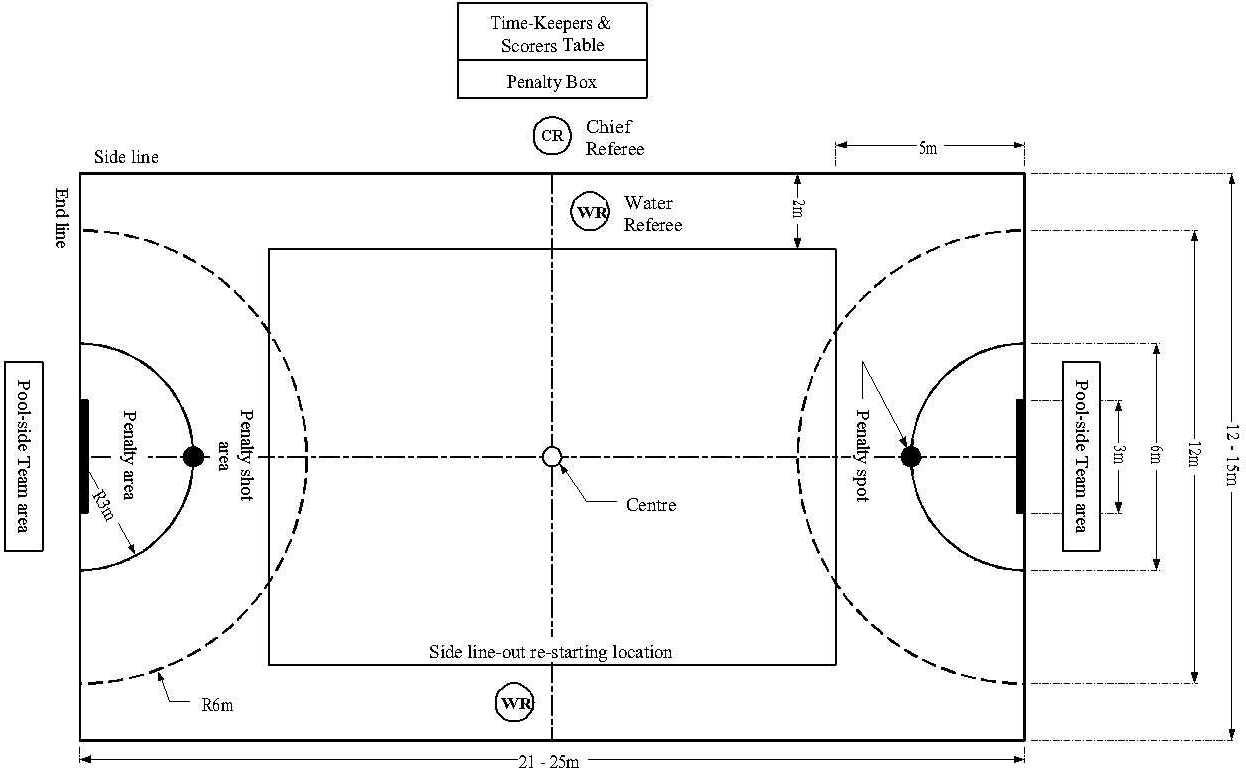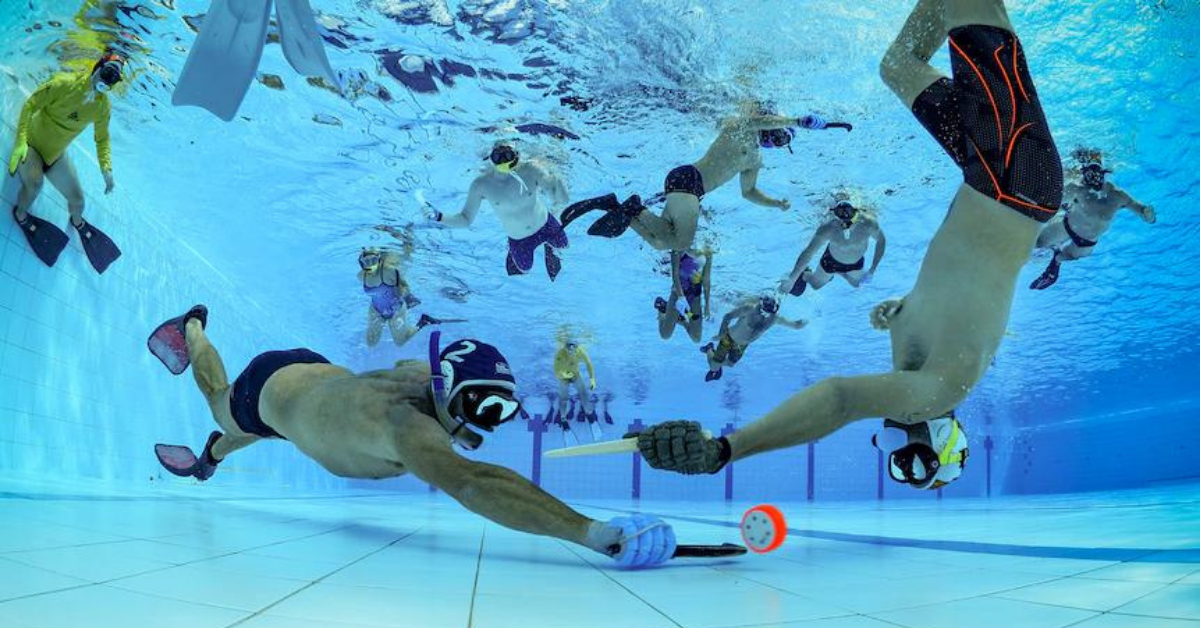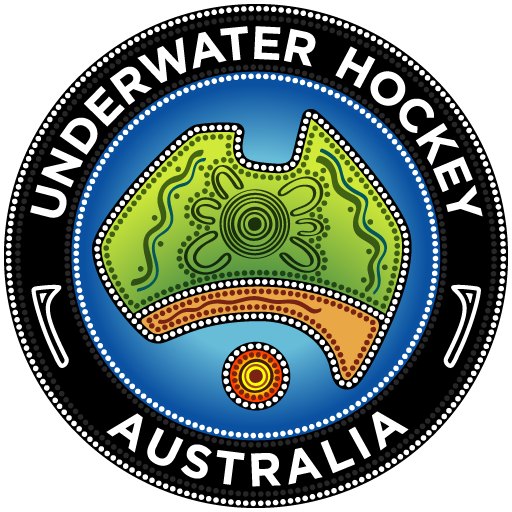Introduction to Underwater Hockey
The British Navy invented underwater hockey in the 1950s to keep divers fit and help them work underwater. The sport quickly spread, now played in 20+ countries.
How To Play
Playing Field
Played in a 25m x 15m pool, 1.8–3m deep.
Game Duration
15-min halves, 3-min half time, 1 time out per team/half.
Team Structure
12 players per team, 6 in the water at once, 4 interchanges.

Starting the Game
Start at pool ends, race for the puck at the buzzer. Score by pushing puck into the goal tray.
Team Configurations
Usually 3 forwards (strike, 2 wings) and 3 backs (2 halves, 1 full back).
The Puck
Lead core, plastic coated, 1.5kg.

Player Gear
- Fins
- Mask & Snorkel
- Latex glove
- 25cm wooden stick (bat)
Top players can flick the puck over 3m off the bottom. Gloves protect hands, sticks have straight and curved edges for flicks/hooks.
Find Out MoreRules & Penalties
Non-contact, no offsides, no interfering with free hand, no puck on glove. 2 in-water referees, one deck ref. Penalties: free puck, player ejection (1-2 min or full game), penalty goals.
Competitions
Club, national, and world titles. Worlds every 2 years (April/May). Tri-Nations in off years (Aus/NZ/SA). Teams: U18, U21, Open, Masters.

Why Play?
Safe for all ages and sizes, minimal impact, few injuries, always interesting. 3D gameplay and teamwork mean you’ll always be learning.
The game is 3D—your only limit is your imagination.
More
- Managed by Underwater Hockey Australia, part of AUF
- International rules

